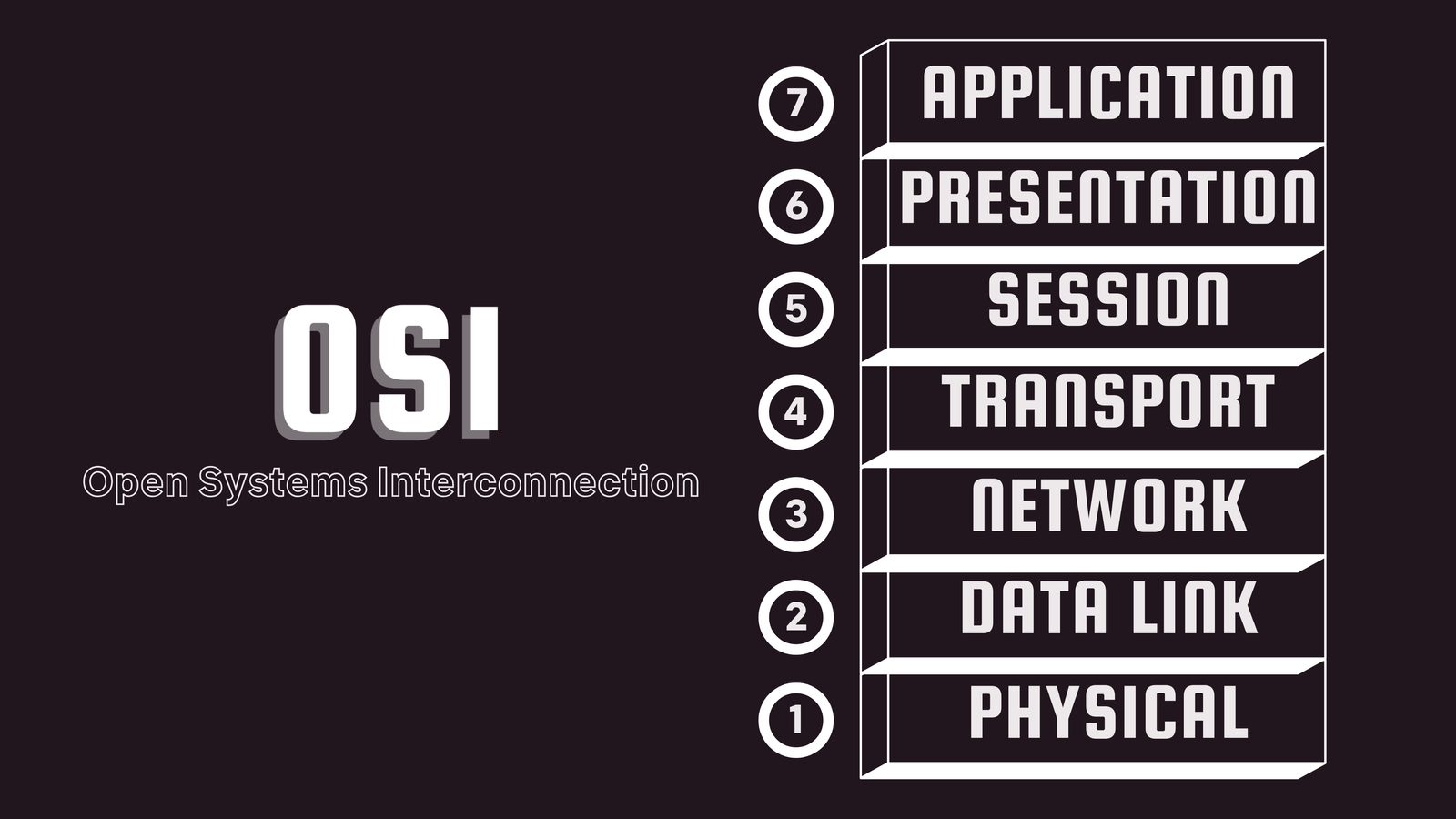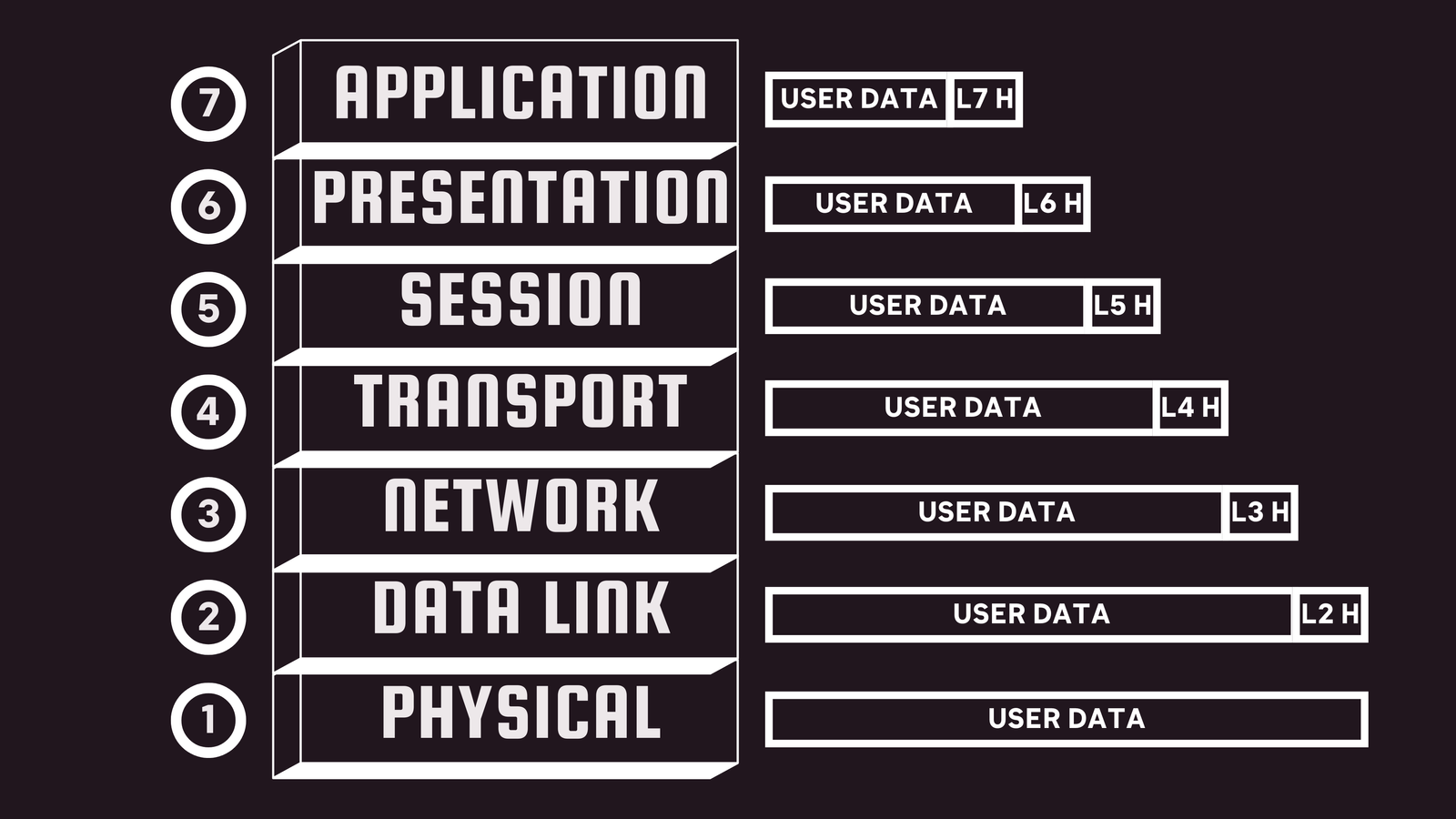The OSI Model: Your Network’s Blueprint

Network communications can seem very complex, but there’s a fundamental framework that brings order to the chaos: the OSI Model. Created by the International Organization for Standardization in 1984, this seven-layer model has become the universal language of network engineers worldwide.
Think of the OSI Model as a post office for your data. Each layer has a specific job, working together seamlessly to deliver everything from cat videos to critical business emails across the internet. By breaking down complex network operations into seven independent layers, the OSI Model gives us a clear blueprint for understanding how data travels through networks.
The Seven Layers Explained
Layer 7: Application
This is where humans interact with the network through end-user applications. Common examples include Chrome, Slack, and Zoom – the software we use daily.
Layer 6: Presentation
The presentation layer handles crucial behind-the-scenes work, managing data encryption and formatting to ensure information is readable by the receiving system.
Layer 5: Session
Think of this as the conversation manager. The session layer establishes, maintains, and terminates connections between applications, ensuring smooth communication from start to finish.
Layer 4: Transport
This layer ensures end-to-end data transmission using two main protocols:
- TCP (Transmission Control Protocol)
- UDP (User Datagram Protocol)
Layer 3: Network
The network layer handles packet forwarding using IP addresses and routing, determining the best path for your data to travel.
Layer 2: Data Link
This layer manages communication within the local network using MAC addresses, ensuring reliable point-to-point delivery.
Layer 1: Physical
At the foundation lies the physical layer, encompassing the tangible infrastructure of networking: cables, wifi signals, and other hardware that transmits raw bits of data.
Data Encapsulation: The Gift-Wrapping Process
 Data travels through these layers like a gift being progressively wrapped. When information starts at the application layer, each subsequent layer adds its own header – a process called encapsulation. When the data reaches its destination, it undergoes decapsulation, with each layer unwrapping its portion until the original data emerges.
Data travels through these layers like a gift being progressively wrapped. When information starts at the application layer, each subsequent layer adds its own header – a process called encapsulation. When the data reaches its destination, it undergoes decapsulation, with each layer unwrapping its portion until the original data emerges.
Practical Applications: Your Troubleshooting Compass
The OSI Model isn’t just theoretical – it’s an invaluable troubleshooting tool. When network problems arise, technicians typically start at Layer 1 and work their way up, methodically isolating issues. Here’s a quick troubleshooting guide by layer:
- Physical Layer Issues: Check cables and physical connections
- Data Link Problems: Investigate switch configurations and MAC address conflicts
- Network Troubles: Verify routing configurations
- Transport Layer Hiccups: Confirm TCP/UDP port accessibility on firewalls
- Upper Layer Issues (Session, Presentation, Application): These often manifest as application problems – try restarting the application or consulting with developers
Why It Matters
Understanding the OSI Model is like having x-ray vision into your network. It provides a structured approach to network analysis and troubleshooting, making it an essential skill for IT professionals. Whether you’re diagnosing connection problems or designing network architecture, the OSI Model serves as your conceptual foundation.
For anyone working in IT or network administration, mastering these seven layers isn’t just academic – it’s a fundamental skill that will serve you throughout your career. The model’s enduring relevance speaks to its elegant simplicity and practical utility in understanding modern network communications.
By breaking down complex networks into these logical layers, the OSI Model continues to be an invaluable tool for network professionals worldwide, helping us understand, maintain, and troubleshoot the digital infrastructure that powers our connected world.
If you’re interested to watch a youtube video of this blog, you can go to this link https://youtu.be/5X8nEJqZq2A?si=bQNDZNPmhiG36vHH
 Packetbrew
Packetbrew